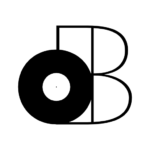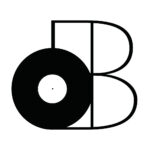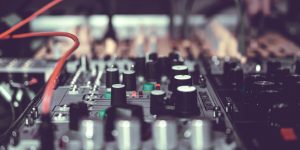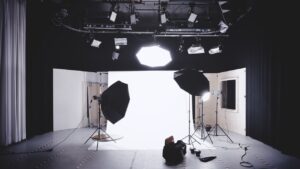Is it an art, a craft or simply your next hobby?
Regardless of what you make of it, sound design is the process of creating, manipulating, and organizing sounds to enhance the production value of an audiovisual work.
It plays a critical role in many forms of media including films, TV shows, video games, etc…
But the real question is… Why do YOU want to know more about sound design?
If it’s a career you’re after, then you’ll definitely find what you’re looking for in this guide.
However, I must warn you… The path of a sound designer is filled with many challenges!
For example, you’ll need to get yourself equipped with the proper equipment, software and sound effects libraries.
That can become quite costly throughout the course of your career, BUT…
That’s not a problem! Because once you learn how to create a compelling portfolio, network with the right individuals and listen with a critical ear; it’ll definitely pay for itself.
You’ll just need to put in the hours and persevere when it seems like you aren’t making any progress.
With me on your side though, you’ll hopefully save some of that valuable time and get straight into the important stuff.
So, let’s start with the most essential step…
Get yourself equipped
To be completely honest, you could get started in sound design TODAY with just a laptop and a pair of decent headphones.
However, I’d say that’s acceptable ONLY if you’re learning and/or planning to work for a company.
If you’re planning to start your own freelance sound design service though, you’ll need to build yourself an actual studio…
- Computer: A powerful computer with a fast processor and ample RAM is necessary (check out the M1 Mac Mini)
- Digital Audio Workstation (DAW): A DAW is software that allows a sound designer to record, edit, and mix sound.
- Audio Interface: An audio interface is used to connect microphones and other external audio sources to a computer.
- Microphones: Different types of microphones are used for various applications, including condenser microphones for recording vocals and dialogue and shotgun microphones for field recording. You can use either type for foley.
- Headphones and Speakers: High-quality headphones and studio monitors are used to accurately monitor and mix sound.
- MIDI Controller: A MIDI controller is used to control your DAW and virtual instruments.
- Sound Effects Libraries: Sound designers often use sound effects libraries to find and manipulate pre-recorded sounds to use in their projects.
- Plug-Ins: Plug-ins are software add-ons used within a DAW to add various effects and processing to audio (for example, a denoiser for dialogue editing).
- Cables and Stands: A variety of cables, such as XLR and TRS, are used to connect audio equipment together. Stands are used to hold microphones and speakers in place.
- Soundproofing Materials: Depending on the sound designer’s workspace, acoustic panels and/or soundproof modules may be required.
It’s essentially the same tools you’d find in any professional recording studio.
However, the most significant investment you’ll be making is in regards to software, plugins and sound effects libraries. If you want to learn more about that, read on.
Get familiar with the software
When it comes to sound design for picture, there are 2 main DAWs…
- Pro Tools
- Fairlight (part of Davinci Resolve)
You can try using other DAWs, but you will inevitably regret your decision (I won’t get into why in this article).
When it comes to sound design for video games, you’ll also need to know…
- Reaper
- Wwise
- FMOD
- Unreal Engine
- Unity
You can also attempt to use Reaper for picture, but the #1 problem (in my opinion) is that it cannot import AAF files. That’s a must if you’re working with video editors.
As a sound designer, there are also several audio post-production plugins that you should be familiar with to create, manipulate and process sounds effectively…
- EQ plugins: FabFilter Pro-Q, Waves SSL E-Channel, iZotope Neutron
- Reverb plugins: Valhalla VintageVerb, Lexicon PCM Native Reverb, Altiverb
- Delay plugins: Soundtoys EchoBoy, Native Instruments Replika XT, Waves H-Delay
- Compressor plugins: Universal Audio LA-2A, FabFilter Pro-C, Waves SSL G-Master Buss Compressor
- Distortion plugins: Soundtoys Decapitator, FabFilter Saturn, Waves Abbey Road Saturator
- Spectral processing plugins: iZotope RX 9, Waves X-Noise, Zynaptiq UNVEIL
Here are some of my personal favourite/essential plugins…
- Accusonus ERA 6 Bundle
- Waves Clarity Vx Pro
- EDWARD Ultimate SUITE (to be used with Kontakt)
If you want my advice, those are the 3 plugins you should start off with.
Luckily for you, the ERA 6 Bundle is 100% free now since Accusonus got bought out.
Build your sound effects library
When I found out that most sound designers aren’t only working with their own sound effects, I was quite relieved!
It hasn’t always been this way though.
Back in the day, sound designers were required to create their own sound effects libraries from scratch.
Nowadays, you can have access to pretty much every sound effect you’d ever need with platforms like…
- The Hollywood Edge: The Hollywood Edge is one of the most comprehensive sound effects libraries available, with over 70,000 high-quality sound effects in their collection. They offer a wide range of categories, including animals, explosions, vehicles, and more.
- Sound Ideas: Sound Ideas is another well-known sound effects library that has been used by sound designers for many years. They offer a large selection of sound effects in various categories, including nature, sports, and transportation.
- Pro Sound Effects: Pro Sound Effects is a comprehensive sound effects library that offers over 350,000 sound effects in their collection. They have a wide range of categories, including ambiances, backgrounds, and Foley sounds.
- Boom Library: Boom Library is a popular sound effects library that offers high-quality sound effects in a variety of categories, including animals, weapons, and vehicles. They also offer sound design toolkits that can help sound designers create custom sounds.
- Soundly: Soundly is a cloud-based sound effects library that offers over 10,000 sound effects and can be accessed from anywhere with an internet connection. They offer a variety of categories, including Foley, impacts, and sci-fi sounds.
- BBC Sound Effects Library: The BBC Sound Effects Library offers a comprehensive collection of over 16,000 sound effects, including historical sounds and recordings of rare and endangered animals.
- Sounddogs: Sounddogs is a popular sound effects library that offers over 500,000 sound effects in a variety of categories, including Foley, ambiances, and weapons.
- Sonniss: Sonniss is a boutique sound effects library that offers high-quality sound effects recorded by professional sound designers from around the world. They offer a variety of categories, including Foley, weapons, and ambiences.
- The Sound Keeper: The Sound Keeper is a new sound effects library that offers a growing collection of sound effects in various categories, including animals, impacts, and vehicles. They also offer sound design tutorials and tips on their website.
- Soundrangers: Soundrangers is a sound effects library that offers a variety of sound effects in categories such as sci-fi, cartoon, and horror. They also offer custom sound design services and music licensing.
- A Sound Effect: A Sound Effect is a sound effects library that offers a large selection of high-quality sound effects in categories such as ambiences, drones, and Foley. They also offer sound design interviews and articles on their website.
- Epic Stock Media: Epic Stock Media is a sound effects library that offers a wide range of sound effects in categories such as whooshes, impacts, and transitions. They also offer music and sound design elements for games and films.
- Sound Effects Library: Sound Effects Library is a sound effects library that offers a comprehensive collection of sound effects in categories such as animals, weapons, and vehicles. They offer various licensing options, including perpetual licenses and pay-per-use options.
- Pro Sound Effects Hybrid Library: Pro Sound Effects Hybrid Library is a comprehensive sound effects library that includes over 63,000 sound effects from a variety of popular sound effects libraries. The library includes sounds in categories such as Foley, ambience, and weapons.
If you want to start off free (and/or cheap though), I recommend…
- Soundly
- SoundQ (by Pro Sound Effects)
I cover ALL these platforms/services in-depth in another article you can read HERE.
I highly recommend starting off with at least one of these tools before starting to build your own personal sound effects library.
HOWEVER, you’ll definitely want to start cultivating that sooner rather than later.
As good as we have it, there’ll always be sounds that you can’t find in one of these 3rd party libraries. For example, it could be an ambience track that simply isn’t long enough.
It could also be the sound of a chair being pulled out that just doesn’t sound right unless you do it yourself.
That’s a whole other discussion though (read how to record Foley sound effects in your home studio).
Build a portfolio
To get yourself established as a sound designer, you’ll need the following…
- LinkedIn profile (with relevant work experience)
- Instagram profile (with examples of your work)
- IMDB page (with credits, of course)
- Demo Reels (we’ll talk more about that)
Instead of simply linking to the work you’ve done though, you’ll need to condense your portfolio to “bite size” portions referred to as demo reels.
Here’s how to create a sound design demo reel…
- Select your best work: Go through your previous projects and select the ones that showcase your sound design skills the best. Choose a variety of projects that demonstrate your ability to work on different types of projects, such as films, video games, and commercials.
- Edit your clips: Once you have selected your best work, edit the clips down to their best parts. Keep your reel short and engaging, between one and three minutes in length. Make sure the clips flow smoothly from one to the next and use transitions to create a cohesive experience.
- Include your name and contact information: Make sure to include your name and contact information at the beginning or end of the reel, so potential clients or employers can easily reach out to you. Also, make sure to describe everything you did (sound design, re-record mixing, Wwise integration, etc…).
- Get feedback: Before finalizing your reel, show it to other sound designers or professionals in the industry to get feedback. Take their suggestions into account and make adjustments as needed.
- Share your reel: Once your reel is complete, share it on your website, social media channels, or with potential clients or employers. Make sure to keep it updated with your latest work.
Besides the projects you’ve worked on (or if you’re lacking experience in the first palace), you can consider adding “sound re-designs” to your reels.
A sound re-design is the process of re-creating or modifying the sound elements of a media project, such as a film, video game, or animation. It involves replacing or enhancing the original sound effects, music, dialogue, and other audio elements to create a new sonic experience.
Here are the basic steps to create a sound re-design:
- Watch the original media project: Before you begin re-designing the sound, watch the original project several times to understand its story, characters, and mood. Take note of the sound effects, music, and dialogue that you want to replace or modify.
- Gather sound resources: Collect sound resources from various sources, such as sound libraries, field recordings and foley. Choose sounds that match the mood and tone of the project.
- Create a rough edit: Using a video editing software, create a rough edit of the original project by muting its original sound elements.
- Add sound effects: Start adding sound effects to the project. Choose sounds that match the actions and events on screen.
- Add dialogue (optional): Record or source new dialogue to replace or supplement the original dialogue. Edit the new dialogue to match the on-screen action and add it to the project.
- Mix and master: Once you have added all the new sound elements, mix and master the audio to ensure a balanced and cohesive final result. Adjust the volume levels, panning, and EQ to create a smooth sonic experience.
- Export and deliver: Export the final audio mix and sync it back to the original media project.
I personally recommend creating a variety of demo reels in different genres (cartoon, action, video games, etc…) to get access to as many opportunities as possible.
It’ll also train your ear to different aesthetics in the sound design world.
Build a strong network
But WHO should you network with as an aspiring sound designer?
You might find yourself running around in circles going to networking events and adding just about every person you can think of on LinkedIn…
The truth is, there aren’t many people who even understand what a sound designer is (or does).
You’d be surprised how many people in the industry don’t even know!
That being said, you can save yourself LOTS of time if you know who to connect with.
I’m not saying to limit your outreach, but you’ll get better results if you focus on…
- Producers
- Directors
- Video Editors
Those are the 3 types of individuals that’ll bring you the most work as a sound designer.
You can meet these individuals in the following ways…
- Attend Industry Events: Attend sound design conferences, meetups, and workshops to connect with other industry professionals. Look for events in your area or online and make a point to attend as many as possible.
- Join Online Communities: Join online groups and forums where sound designers and other industry professionals discuss the latest trends and share their experiences. LinkedIn, Facebook Groups, and Reddit are great places to start.
- Collaborate on Projects: Collaborate with other creatives, such as filmmakers or game developers, to gain exposure and build relationships. Participating in collaborative projects can also help you build your portfolio.
- Connect with Sound Studios: Reach out to sound studios in your area and introduce yourself. Ask if they have any upcoming projects that you can help with, or if they would be willing to give you a tour of their facilities (or an internship).
- Attend Social Gatherings: Attend social events such as industry parties or after-work gatherings. These events provide an opportunity to meet new people and build relationships in a more relaxed setting.
- Follow Industry Leaders: Follow industry leaders on social media and engage with them by commenting on their posts or sharing their content. This can help you build relationships and stay up-to-date on the latest trends in the industry.
Remember, networking is all about building relationships. Be genuine, be respectful, and be patient. By following these tips, you can build a strong network of connections that can help you advance your career as a sound designer.
I’ve personally gotten most of my clients through a combination of LinkedIn and sending emails that point back to my website (portfolio).
You may even want to consider picking up the phone and CALLING!
Watch and learn
Or rather, LISTEN and learn!
If you want to become a sound designer that focuses on TV/Film, then you need to start studying your favorite TV series and movies under the microscope.
If you want to focus your sound design on video games, play a game or two! However, you could also watch walkthroughs/playthroughs of other people playing if you don’t want to waste too much of your precious time (because it is quite valuable)!
Regardless, you’ll want to start listening using a critical ear and high-end hardware.
For example, you might want to purchase yourself a 5.1 home theater system to get an idea of how sound designer and re-record mixers think about surround sound.
Sound bars, headphones and reference monitors are also a great tools to study with.
If you don’t have much time to sit down and spend lots of time on the road, you can also consider downloading movies/TV shows and LISTENING to them (not watching them) while you drive to work.
Whatever gets you listening, do it!
If you’re looking for some TV series and films with some of the best sound design, you can check out THIS article.
Summary: Sound Design 101
To sum up, sound design can be seen as an art form, a technical skill, or a fun hobby.
But no matter how you approach it, it plays a vital role in creating immersive audiovisual experiences for audiences.
Whether you’re interested in pursuing a career in sound design or simply want to enhance your knowledge, it’s important to understand the process of creating, manipulating, and organizing sounds.
Though the road to success as a sound designer can be challenging and require significant investment in tools and resources, the payoff in terms of job satisfaction and creative fulfillment can be enormous.
By honing your skills, building a portfolio, and cultivating a critical ear, you can carve out a successful path in the sound design industry.
So, take the first step towards achieving your goals and dive into the exciting world of sound design!
If you have any questions, feel free to leave me a comment.
Thanks for reading.
Sources
https://www.nfi.edu/sound-design/
https://www.thefilmfund.co/sound-design-101-the-ultimate-guide-to-great-film-sound/#.Y_aDKOzMJzU







